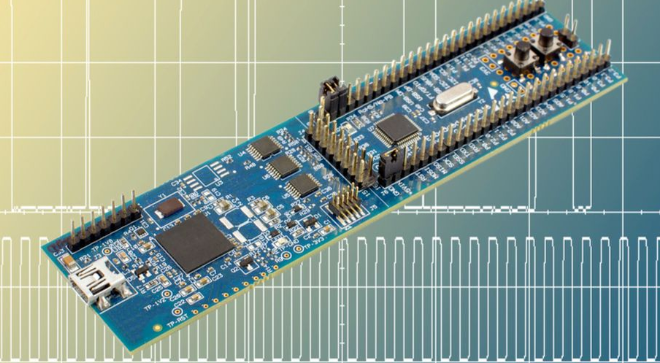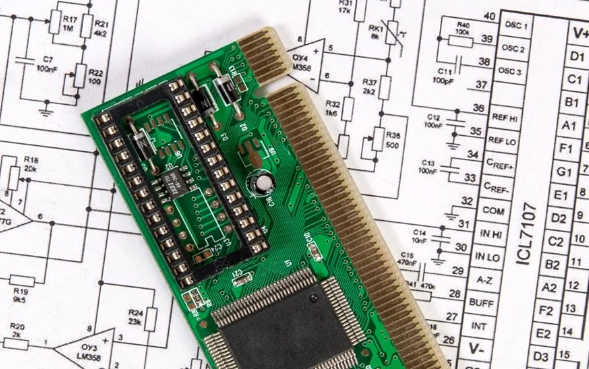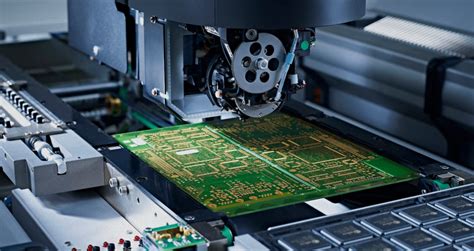Bpl pcb manufacturing
Innovations in BPL PCB Manufacturing: Trends and Technologies
In recent years, the field of BPL (Bare Printed Circuit Board) manufacturing has witnessed significant advancements, driven by the relentless pursuit of innovation and efficiency. As the backbone of electronic devices, PCBs are crucial in ensuring the functionality and reliability of modern technology. Consequently, manufacturers are continually exploring new trends and technologies to enhance the production process, improve quality, and reduce costs.
One of the most notable trends in BPL PCB manufacturing is the increasing adoption of automation and robotics.
Automation has revolutionized the industry by streamlining production processes, minimizing human error, and increasing throughput. Robotic systems are now capable of performing intricate tasks such as component placement and soldering with remarkable precision. This not only enhances the quality of the final product but also significantly reduces production time, allowing manufacturers to meet the growing demand for electronic devices.
In addition to automation, the integration of advanced materials is another key development in BPL PCB manufacturing.
Traditional materials such as FR-4 are being supplemented or replaced by high-performance alternatives like polyimide and ceramic substrates. These materials offer superior thermal stability, electrical performance, and mechanical strength, making them ideal for applications in high-frequency and high-temperature environments. As a result, manufacturers can produce PCBs that are more durable and capable of supporting the complex functionalities required by modern electronics.
Moreover, the rise of additive manufacturing, commonly known as 3D printing, is beginning to make its mark on the PCB industry.
This technology allows for the creation of complex, multi-layered PCBs with intricate designs that were previously difficult or impossible to achieve using traditional methods. By enabling rapid prototyping and customization, 3D printing is opening new avenues for innovation and design flexibility in PCB manufacturing. This is particularly beneficial for industries such as aerospace and medical devices, where bespoke solutions are often required.
Furthermore, the implementation of Industry 4.0 principles is transforming BPL PCB manufacturing into a more connected and intelligent process.
By leveraging the Internet of Things (IoT), big data analytics, and artificial intelligence (AI), manufacturers can optimize production lines, predict maintenance needs, and enhance quality control. For instance, real-time data collection and analysis enable manufacturers to identify and rectify defects early in the production process, thereby reducing waste and improving yield. This data-driven approach not only enhances operational efficiency but also provides valuable insights for continuous improvement.
Sustainability is also becoming a focal point in BPL PCB manufacturing, as environmental concerns and regulatory pressures mount.
Manufacturers are increasingly adopting eco-friendly practices, such as using lead-free solder and reducing the use of hazardous chemicals. Additionally, efforts are being made to recycle and reuse materials, thereby minimizing the environmental impact of PCB production. These sustainable practices not only align with global environmental goals but also appeal to environmentally conscious consumers and businesses.
In conclusion, the landscape of BPL PCB manufacturing is rapidly evolving, driven by technological advancements and a growing emphasis on efficiency and sustainability. Automation, advanced materials, additive manufacturing, and Industry 4.0 are reshaping the industry, offering new opportunities for innovation and growth. As manufacturers continue to embrace these trends and technologies, the future of PCB manufacturing promises to be more dynamic, efficient, and environmentally responsible. This ongoing evolution underscores the critical role that BPL PCBs play in the advancement of modern technology, ensuring that they remain at the forefront of electronic innovation.
The Role of Quality Control in BPL PCB Manufacturing
In the realm of BPL PCB manufacturing, quality control plays a pivotal role in ensuring the reliability and performance of printed circuit boards. As the backbone of modern electronic devices, PCBs must adhere to stringent quality standards to meet the demands of various industries, from consumer electronics to aerospace. The process of quality control in PCB manufacturing is multifaceted, encompassing a series of meticulous inspections and tests designed to identify and rectify defects at every stage of production.
To begin with, the importance of quality control in BPL PCB manufacturing cannot be overstated.
It serves as the foundation for producing PCBs that are not only functional but also durable and efficient. By implementing rigorous quality control measures, manufacturers can minimize the risk of defects that could lead to device failure, thereby safeguarding their reputation and ensuring customer satisfaction. Moreover, quality control helps in maintaining compliance with industry standards and regulations, which is crucial for market competitiveness.
Transitioning to the specifics, the quality control process in PCB manufacturing typically starts with the inspection of raw materials.
Ensuring that the materials used, such as copper-clad laminates and solder masks, meet the required specifications is essential for the integrity of the final product. Any deviation from the specified standards at this stage can compromise the entire manufacturing process. Therefore, manufacturers employ advanced testing equipment to verify the quality of incoming materials before they proceed to the next phase.
As the manufacturing process advances, quality control becomes even more critical.
During the fabrication stage, PCBs undergo a series of processes, including etching, drilling, and plating. Each of these steps presents potential points of failure, making continuous monitoring indispensable. Automated optical inspection (AOI) systems are commonly used to detect defects such as misalignments, shorts, and opens. These systems provide real-time feedback, allowing for immediate corrective actions, which significantly reduces the likelihood of defective boards reaching the assembly line.
Furthermore, electrical testing is a crucial component of quality control in BPL PCB manufacturing.
This involves subjecting the PCBs to various tests to ensure their electrical integrity and functionality. Flying probe testers and in-circuit testers are often employed to verify that the circuits are correctly connected and that there are no shorts or open circuits. By identifying electrical faults early in the process, manufacturers can prevent costly rework and delays.
In addition to these technical aspects, quality control in PCB manufacturing also encompasses process control and continuous improvement initiatives.
By analyzing data collected during inspections and tests, manufacturers can identify trends and areas for improvement. This data-driven approach enables them to refine their processes, enhance efficiency, and reduce waste, ultimately leading to higher quality products.
In conclusion, quality control is an integral part of BPL PCB manufacturing, ensuring that the final products meet the highest standards of reliability and performance. Through a combination of material inspection, process monitoring, and electrical testing, manufacturers can detect and address defects early in the production cycle. This not only enhances product quality but also contributes to operational efficiency and customer satisfaction. As technology continues to evolve, the role of quality control in PCB manufacturing will undoubtedly become even more critical, driving innovation and excellence in the industry.

Sustainability Practices in BPL PCB Manufacturing
In recent years, sustainability has become a pivotal focus in various industries, and the field of printed circuit board (PCB) manufacturing is no exception. BPL PCB manufacturing, a leader in the electronics sector, has been at the forefront of integrating sustainable practices into its production processes. This commitment not only addresses environmental concerns but also aligns with the growing demand for eco-friendly products from consumers and regulatory bodies alike.
To begin with, BPL PCB manufacturing has implemented a series of measures aimed at reducing waste and minimizing the environmental impact of its operations.
One of the primary strategies involves the optimization of material usage. By employing advanced design software and precision engineering techniques, BPL ensures that raw materials are utilized efficiently, thereby reducing excess and waste. This approach not only conserves resources but also lowers production costs, creating a win-win situation for both the company and the environment.
Moreover, BPL has invested in cutting-edge technology to enhance the recyclability of its products.
The company has developed processes that facilitate the recovery and reuse of valuable materials from end-of-life PCBs. This not only reduces the need for virgin materials but also mitigates the environmental impact associated with mining and processing. By closing the loop in the lifecycle of its products, BPL contributes to a circular economy, where resources are continuously reused and recycled.
In addition to material efficiency and recyclability, BPL PCB manufacturing places a strong emphasis on energy conservation.
The company has adopted energy-efficient technologies and practices across its facilities. For instance, the use of LED lighting, energy-efficient HVAC systems, and smart manufacturing technologies helps to significantly reduce energy consumption. Furthermore, BPL has invested in renewable energy sources, such as solar and wind power, to offset its carbon footprint. By transitioning to cleaner energy, the company not only reduces greenhouse gas emissions but also sets a benchmark for sustainability in the industry.
Water conservation is another critical aspect of BPL’s sustainability practices.
PCB manufacturing processes often require significant amounts of water, which can lead to environmental degradation if not managed properly. BPL has implemented water recycling and treatment systems to minimize water usage and prevent pollution. These systems ensure that water is reused within the manufacturing process, reducing the demand for fresh water and minimizing the discharge of pollutants into the environment.
Furthermore, BPL PCB manufacturing is committed to fostering a culture of sustainability among its employees and stakeholders.
The company conducts regular training sessions and workshops to educate its workforce about sustainable practices and the importance of environmental stewardship. By empowering employees with knowledge and skills, BPL ensures that sustainability is ingrained in every aspect of its operations.
In conclusion, BPL PCB manufacturing exemplifies how sustainability can be seamlessly integrated into industrial processes. Through material efficiency, recyclability, energy conservation, and water management, the company not only reduces its environmental impact but also enhances its competitiveness in the market. As sustainability continues to gain prominence, BPL’s proactive approach serves as a model for other manufacturers seeking to balance economic growth with environmental responsibility. By prioritizing sustainability, BPL not only meets the demands of today but also safeguards the resources of tomorrow, ensuring a sustainable future for generations to come.

Challenges and Solutions in BPL PCB Manufacturing
In the realm of electronics, the manufacturing of printed circuit boards (PCBs) is a critical process that underpins the functionality of countless devices. Within this domain, BPL (Bharat Electronics Limited) PCB manufacturing stands out due to its unique set of challenges and the innovative solutions that have been developed to address them. As the demand for more compact, efficient, and reliable electronic devices continues to grow, BPL PCB manufacturing faces the dual challenge of meeting high-quality standards while also optimizing production efficiency.
One of the primary challenges in BPL PCB manufacturing is the complexity of modern electronic designs.
As devices become more sophisticated, the PCBs that power them must accommodate an increasing number of components within a limited space. This miniaturization trend necessitates the use of advanced manufacturing techniques, such as surface-mount technology (SMT) and high-density interconnect (HDI) designs. These techniques, while effective, introduce their own set of challenges, including the need for precise component placement and the management of thermal and electrical performance. To address these issues, BPL has invested in state-of-the-art equipment and software that enhance precision and allow for real-time monitoring of the manufacturing process.
In addition to design complexity, BPL PCB manufacturing must also contend with the challenge of material selection.
The choice of materials can significantly impact the performance, durability, and cost of the final product. For instance, the use of high-frequency laminates is essential for certain applications, but these materials can be expensive and difficult to work with. To mitigate these challenges, BPL has adopted a strategic approach to material sourcing, focusing on building strong relationships with suppliers to ensure a steady supply of high-quality materials. Furthermore, BPL continuously explores alternative materials and innovative composites that can offer similar performance characteristics at a reduced cost.
Another significant challenge in BPL PCB manufacturing is ensuring compliance with stringent environmental and safety regulations.
The production of PCBs involves the use of various chemicals and processes that can have environmental impacts if not managed properly. To address this, BPL has implemented comprehensive waste management and recycling programs, as well as invested in cleaner production technologies. These initiatives not only help in reducing the environmental footprint of PCB manufacturing but also align with global sustainability goals, thereby enhancing BPL’s reputation as a responsible manufacturer.
Moreover, the rapid pace of technological advancement presents an ongoing challenge for BPL PCB manufacturing.
As new technologies emerge, BPL must continuously adapt its processes and capabilities to stay competitive. This requires a commitment to research and development, as well as ongoing training for employees to ensure they are equipped with the latest skills and knowledge. By fostering a culture of innovation and continuous improvement, BPL is able to respond swiftly to technological changes and maintain its position at the forefront of the industry.
In conclusion, while BPL PCB manufacturing faces a myriad of challenges, from design complexity and material selection to regulatory compliance and technological advancement, the company has demonstrated resilience and adaptability in overcoming these obstacles. Through strategic investments in technology, a focus on sustainable practices, and a commitment to innovation, BPL continues to deliver high-quality PCBs that meet the evolving needs of the electronics industry. As the demand for advanced electronic devices continues to rise, BPL’s proactive approach to addressing manufacturing challenges positions it well for future success.







